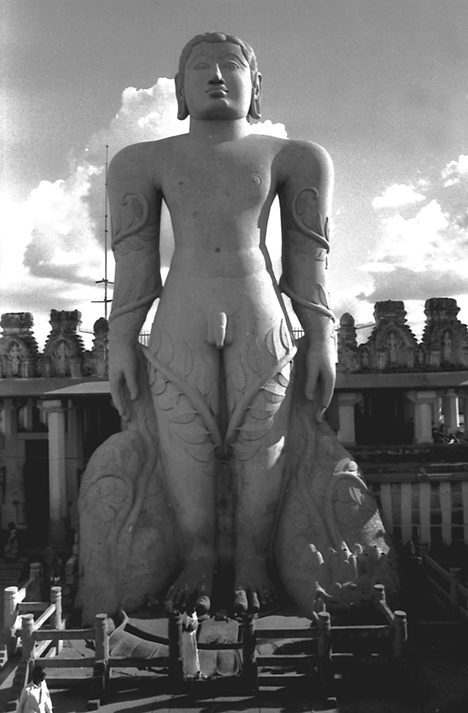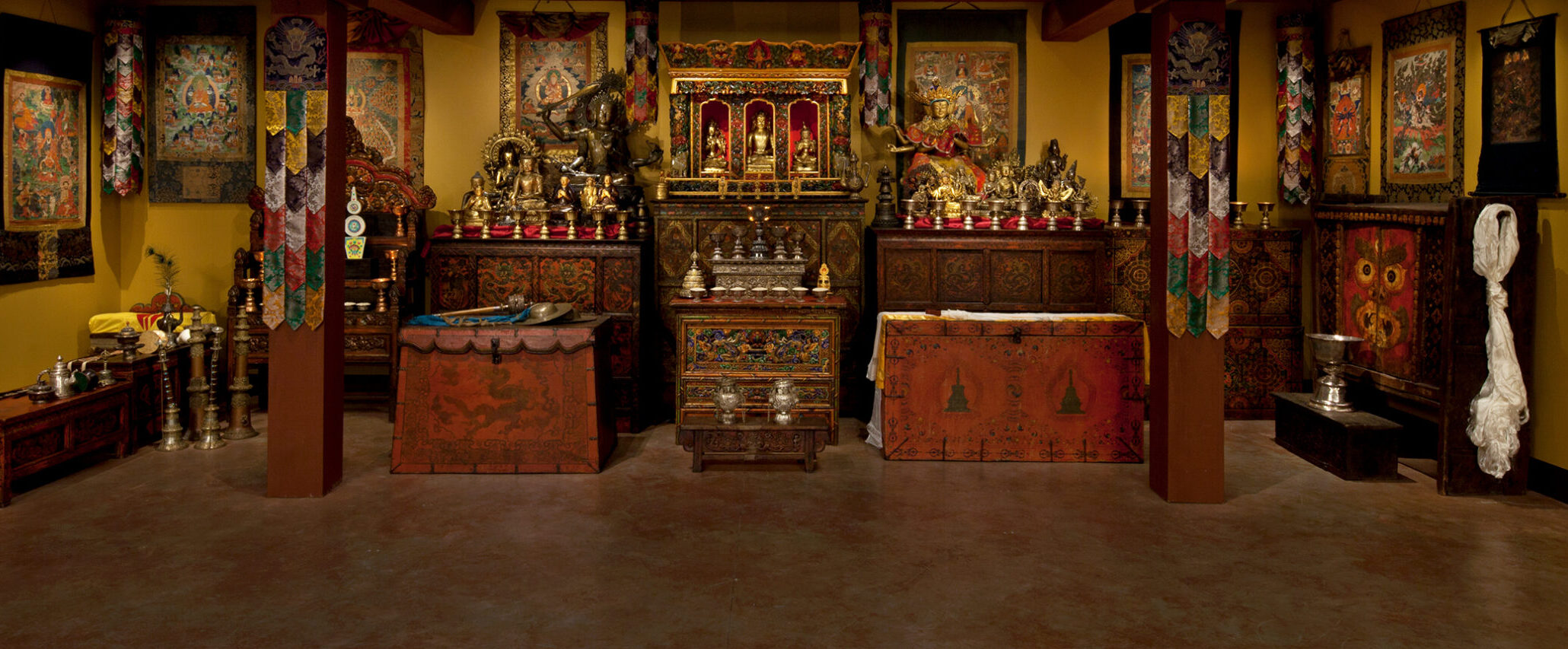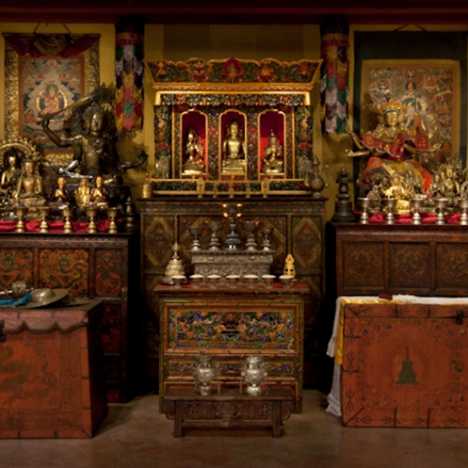
Across the globe people use ritual and spiritual practice to connect with worlds beyond their immediate experience. This iteration of Sacred Spaces is dedicated to a selection of these transcendent and devotional practices.
The Tibetan Buddhist Shrine Room re-creates an immersive sacred space in which visitors can encounter Himalayan art as it is used in practice. Spend a quiet moment in the Shrine Room installation and become vividly aware of how the art relates to the fundamental Buddhist acts of offering, prayer, contemplation, and devotion.
An acoustically treated listening room pays tribute to the work of the composer and musician Pauline Oliveros (1932″“2016), who pioneered the spiritual practice of Deep Listening. This practice is a form of meditation in which “attention is directed to the interplay of sounds and silences or the sound/silence continuum.” We invite you to learn about Deep Listening through self-directed exercises Oliveros titled Sonic Meditations or as participants in scheduled workshops led by certified instructors.

The video featured in the exhibition, by Deidi von Schaewen, focuses on the ritual bathing of the sculpture depicted above, which occurred at the holy pilgrimage site of Shravanabelagola in Karnataka, southern India. The sculpture represents Bahubali, a Jain kevalin (one who has attained absolute knowledge). This monumental sculpture is carved from a single piece of stone and was installed on the mountainside in 981 CE. His feet and legs are covered with vines, which are said to have grown as he stood motionless for a year in meditation. “‹ “‹
Sacred Spaces is made possible by The Hoch 2009 Charitable Lead Trust and Rasika and Girish Reddy, as well as Bob and Lois Baylis, Ashwini and Anita Gupta, Preethi Krishna and Ram Sundaram, William and Pamela Michaelcheck, Tulku Tsultrim Pelgyi, Manoj and Rita Singh, Venkat and Pratima Srinivasan, the Zakaria Family Foundation, and contributors to the 2017 Exhibitions Fund.


